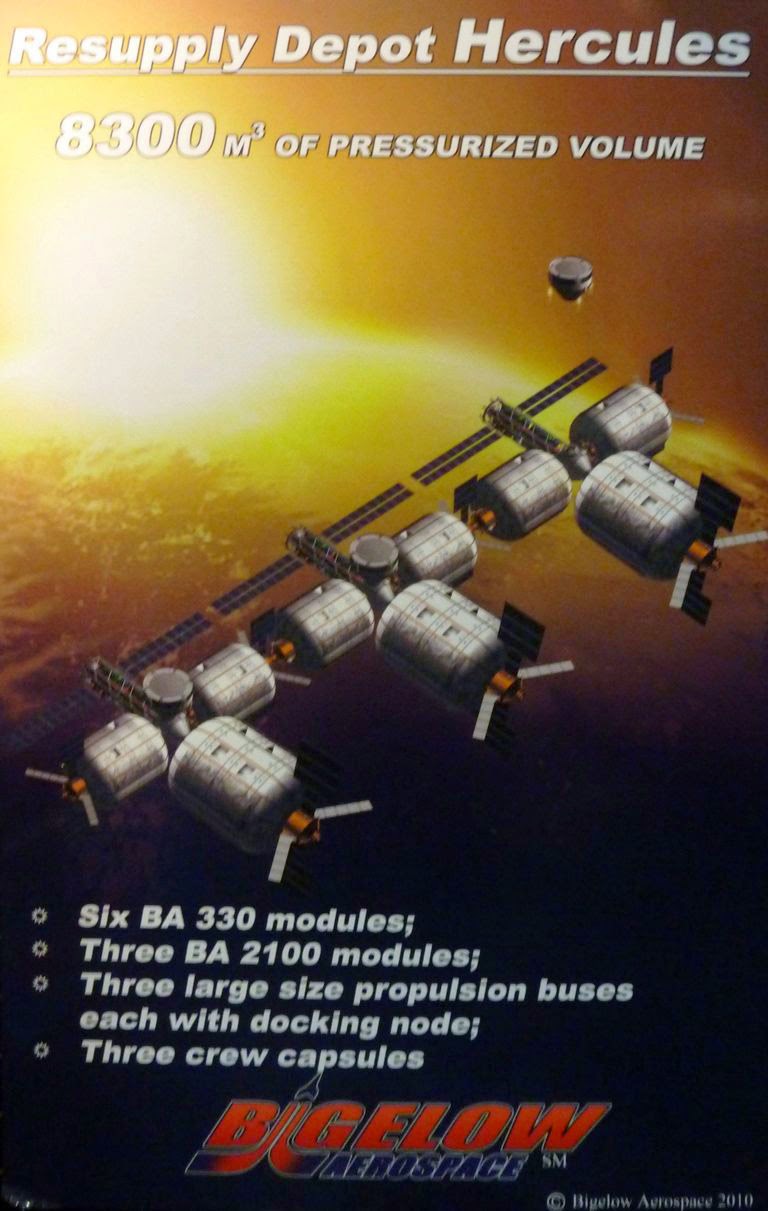1. Blasting News – Jeff Bezos, of Amazon.com and Blue Origin, wants to move heavy industry into space
Bezos listed two advantages for this scheme.
* Relocating heavy industry into space will help to save the planet from the pollution inherent in building things. The threat of human-caused climate change would be lifted. Everything will be green and pristine.
* Space is exposed to 24/7 sunlight, unfiltered by the Earth’s atmosphere, which can be converted to solar energy to run these heavy industries.
Bezos did not list a couple of other advantages to building things in space.
A factory in space would have access to boundless extraterrestrial resources, on the moon and in thousands of asteroids. This fact would have the side effect of ending the mining and refining industries on Earth.
Amazon.com and Blue Origin CEO Jeff Bezos envisions “millions” of people living in orbit as his exploration company, Blue Origin, and other commercial ventures develop spacecraft to make travel more widely available.
Bigelow Aerospace has designed 2100 cubic meter expandable space station modules which might be launchable by a slightly refined Spacex Heavy. Bigelow now has a expanded room on the International Space Station.
Spacex could launch 100 Bigelow 2100 cubic meter modules for about $1 billion using two reusable Spacex Heavies over as little as one year (one launch per week). Blue Origin might also be able to make larger reusable rockets.
This would be 200,000 cubic meters of volume. This would be enough for 2000 people with the same facilities per person as the Hercules resupply depot design.
Robotic and additive manufacturing could enable massive frames and massive solar power arrays
Tethers Unlimited is currently developing a revolutionary suite of technologies called “SpiderFab” to enable on-orbit fabrication of large spacecraft components such as antennas, solar panels, trusses, and other multifunctional structures. SpiderFab provides order-of-magnitude packing- and mass- efficiency improvements over current deployable structures and enables construction of kilometer-scale apertures within current launch vehicle capabilities, providing higher-resolution data at lower life-cycle cost.
They have received a $500,000 phase 2 NASA NIAC contract, which follows a $100,000 phase 1 contract to develop the technology.
Henson Bootstrapping plan for planet wide energy replacement
Space based solar power satellites could replace fossil fuels. This would require both lower cost and higher volume than SpaceX could deliver. The cost to GEO can’t go to over $200 per kilogram and the required traffic level is 15 million tons per year to LEO. (12 million to GEO.)
The main advantage of orbital space based solar is you get 5 times as much sun as the best deserts and 15 times for places like Japan and the UK.
Henson’s space based solar plans solve energy concerns without subsidies and make a lot of money. Low energy cost makes everyone better off.
Initial target cost is 3 cents per kWh to undercut coal, 2 cents or less to replace oil.
4. Nextbigfuture – SpaceX will send an unmanned mission to Mars using the Dragon V2 rocket — starting in 2018 and launch a rocket to Mars every 26 months. The plan is for the first manned Mars mission in 2024.
First planned unmanned Mars mission 2018
Second planned unmanned Mars mission 2020
Third planned unmanned Mars mission 2022
First planned manned Mars mission 2024
A study of a potential 2021 Red Dragon mission suggested that it could offer a low-cost way for NASA to achieve a Mars sample return for study. The Red Dragon capsule would be equipped with the system needed to return samples gathered on Mars, including a Mars Ascent Vehicle (MAV), an Earth Return Vehicle (ERV), and hardware to transfer a sample collected in a previously landed rover mission, such as NASA’s planned Mars 2020 rover, to the ERV. ERV would transfer the samples to high Earth orbit, where a separate future mission would pick up the samples and de-orbit to Earth
Incredible sight of pleasure craft zooming past SpaceX Falcon 9 booster from Thaicom-8 launch on May 27, 2016 as it arrives at the mouth of Port Canaveral, FL, atop droneship platform on June 2, 2016. Credit: Ken Kremer/kenkremer.com
6. Planeteria – Back to the Moon? New House bill defunds NASA’s Asteroid Redirect Mission
7. The Examiner – The return to the moon may be coming together at last
8. The Examiner What Greta Van Susteren got wrong about transmitting pictures from Pluto
9.Chandra X-Ray Telescope Blog – Cosmic Genealogy: the Ancestors of Supermassive Black Holes
10 .Universe Today – The Hubble Constant Just Got Constantier
11. Chicago Space – A Space Policy Discussion with Libertarian Presidential Candidate Gary Johnson

Brian Wang is a Futurist Thought Leader and a popular Science blogger with 1 million readers per month. His blog Nextbigfuture.com is ranked #1 Science News Blog. It covers many disruptive technology and trends including Space, Robotics, Artificial Intelligence, Medicine, Anti-aging Biotechnology, and Nanotechnology.
Known for identifying cutting edge technologies, he is currently a Co-Founder of a startup and fundraiser for high potential early-stage companies. He is the Head of Research for Allocations for deep technology investments and an Angel Investor at Space Angels.
A frequent speaker at corporations, he has been a TEDx speaker, a Singularity University speaker and guest at numerous interviews for radio and podcasts. He is open to public speaking and advising engagements.





